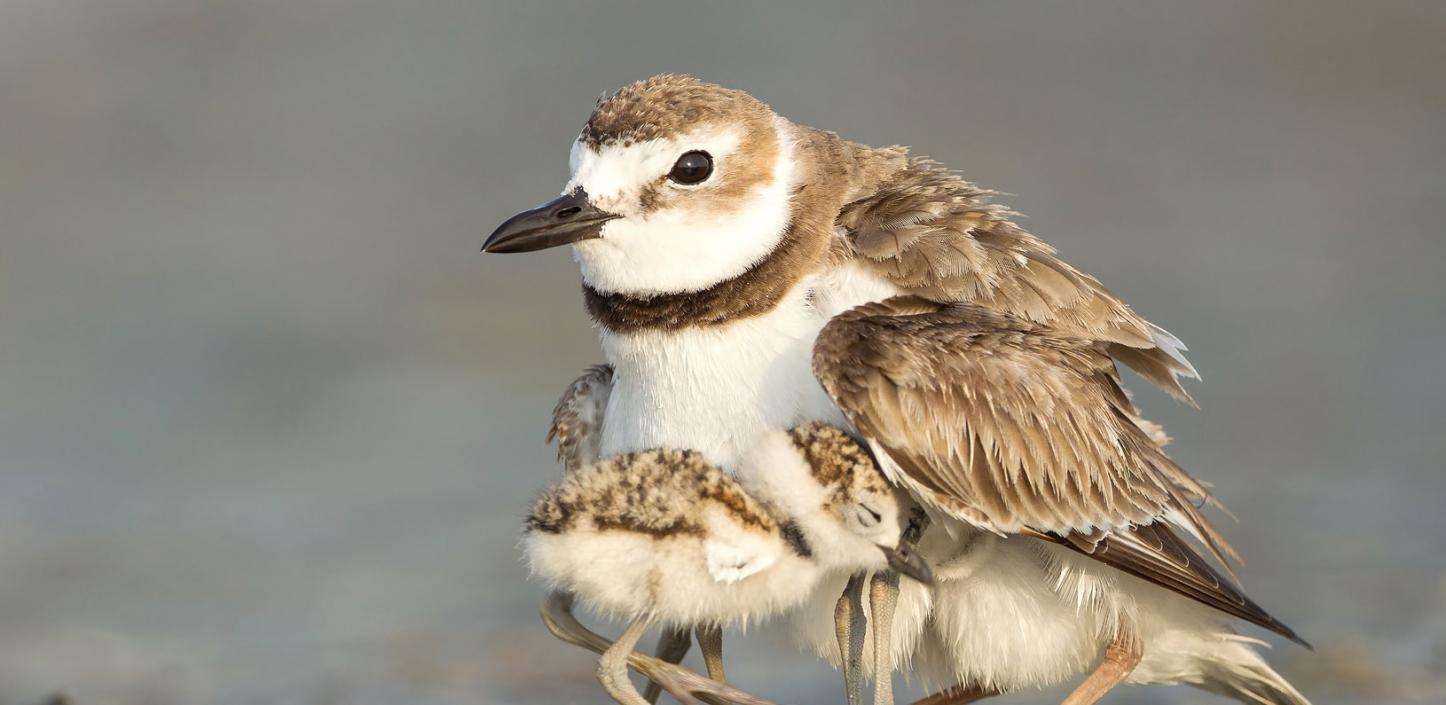
Restoring the Gulf’s Shorebirds and Seabirds
It’s been a tough couple of years for shorebirds and seabirds along the Gulf Coast.
In 2010, the Deepwater Horizon oil spill degraded critical nesting sites, weakening already imperiled populations of birds. Since the spill, development, erosion and hurricanes have continued to chip away at these habitats and batter nesting sites.
But now, thanks to an historic new project in the Sunshine State, the birds are getting a boost.
In fiscal year 2017, NFWF awarded $11.3 million to the Florida Fish and Wildlife Conservation Commission and Audubon Florida to fund a four-year project focused on shorebirds and seabirds along Florida’s Gulf Coast. The project aims to increase the breeding populations of American oystercatchers, black skimmers, least terns, Wilson’s plovers and snowy plovers.
“Shorebirds and seabirds depend on Florida’s beautiful beaches and coastal habitats for survival, and they nest in the same areas that are highly sought after for development and tourism,” said Janell Brush, avian research biologist at the commission. “Depending on the coastal environment makes them extremely vulnerable to storms, disturbances by people and pets, and also to a suite of predators.”
NFWF’s grant, administered through its Gulf Environmental Benefit Fund (GEBF), will pay for critical equipment and technologies needed to monitor, manage, protect and conserve breeding populations, as well as to identify and manage the greatest threats. The grant will enable the state and its partners to conduct habitat improvement projects, control predators and human disturbances at nesting sites, and expand the Florida Shorebird Database.
The grant also supports efforts by Audubon Florida and its enormous network of volunteers, including “stewards” who chaperone nesting sites and educate beachgoers to ensure compliance with posted areas.
“Florida hosts millions of tourists each year, and the unique shorebirds and seabirds encountered on the beach are part of the draw to Florida’s dynamic coastal systems,” said Shea Armstrong, the commission’s shorebird partnership coordinator. “Audubon Florida’s Beach Steward program is critical for consistently educating people about beach-dependent birds, and how to support the birds in raising their next generation.”
Throughout 2017, the GEBF continued to support and guide landscape-scale recovery and restoration projects across the five states directly affected by the oil spill: Alabama, Florida, Louisiana, Mississippi and Texas. The fund approved nearly $390 million for conservation and restoration projects in 2017, and the GEBF’s total cumulative investments since its creation in 2013 are rapidly approaching $1 billion.
Contact: Matt Winter 202-857-0166